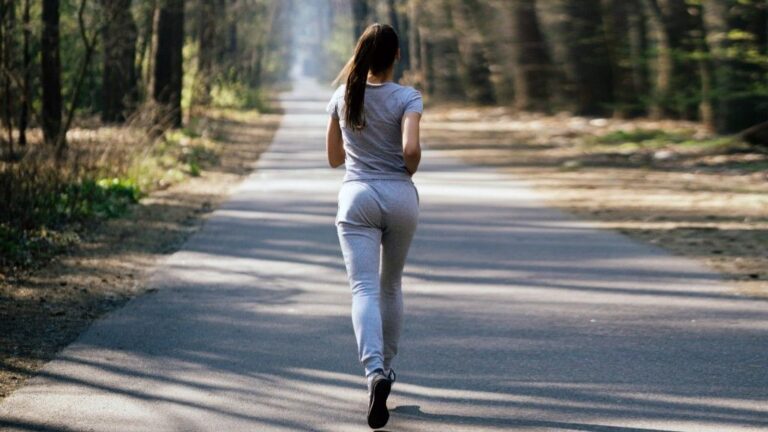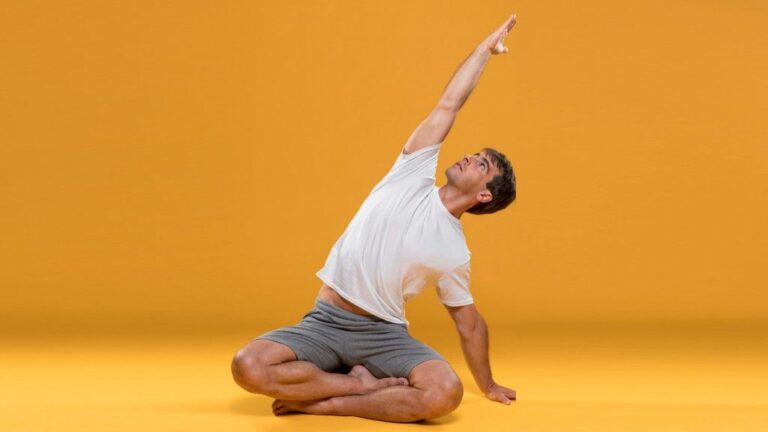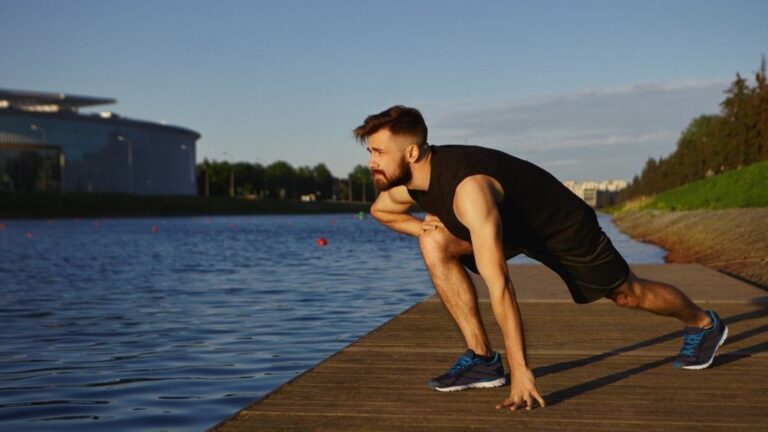5 Morning Exercises That Help You Stay Strong, Mobile & Ageless After 40 – There’s something magical about starting your day with movement. For adults over 40, a morning exercise routine isn’t just about getting the blood flowing—it’s an investment in long-term health and vitality.
As we age, our bodies naturally face challenges like stiffness, reduced flexibility, and slower recovery times. But here’s the good news: consistent, mindful movement can counteract these effects and set you up for a strong, energized day ahead.
“Morning movement primes your body and mind for the day,” says certified personal trainer and mobility specialist Lisa Bennett. “It wakes up your muscles, lubricates your joints, and boosts circulation, which are all essential for staying active and feeling great as we age.”
The best part? You don’t need fancy equipment or hours of time to reap the benefits. This simple five-exercise routine is designed to target mobility, joint health, muscle activation, and posture—all in just 10–15 minutes. Let’s get moving!
Table of Contents
1. Cat-Cow Stretch
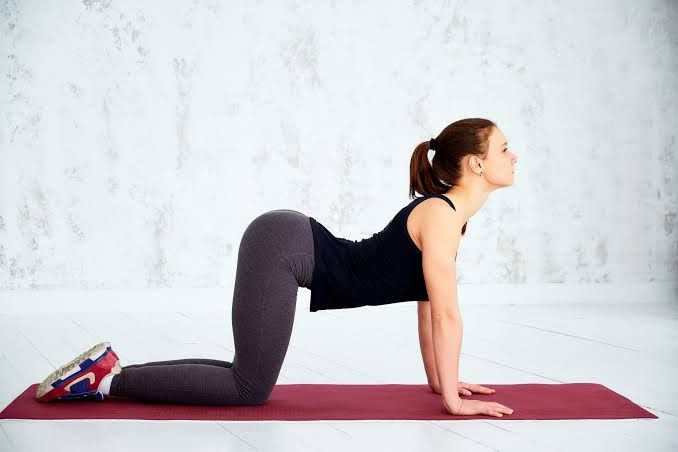
What It Targets: Spine mobility, back flexibility, and posture
Why It Matters: Stiffness in the spine and poor posture are common concerns after 40. This gentle flow helps loosen your back muscles, improve spinal flexibility, and prepare your body for movement.
How to Do It:
- Start on all fours in a tabletop position, with your wrists under your shoulders and knees under your hips.
- Inhale deeply as you arch your back, dropping your belly toward the floor and lifting your head and tailbone upward (Cow Pose).
- Exhale as you round your back toward the ceiling, tucking your chin to your chest and drawing your belly button inward (Cat Pose).
- Repeat 8–10 slow, controlled repetitions, matching each movement to your breath.
Bonus Benefit: Regularly practicing this stretch may help prevent tension-related back pain and promote better posture throughout the day.
Also read – 7 Strength Tests That Reveal How Well Your Body Is Aging (and What to Do About It)
2. Standing Forward Fold with a Twist
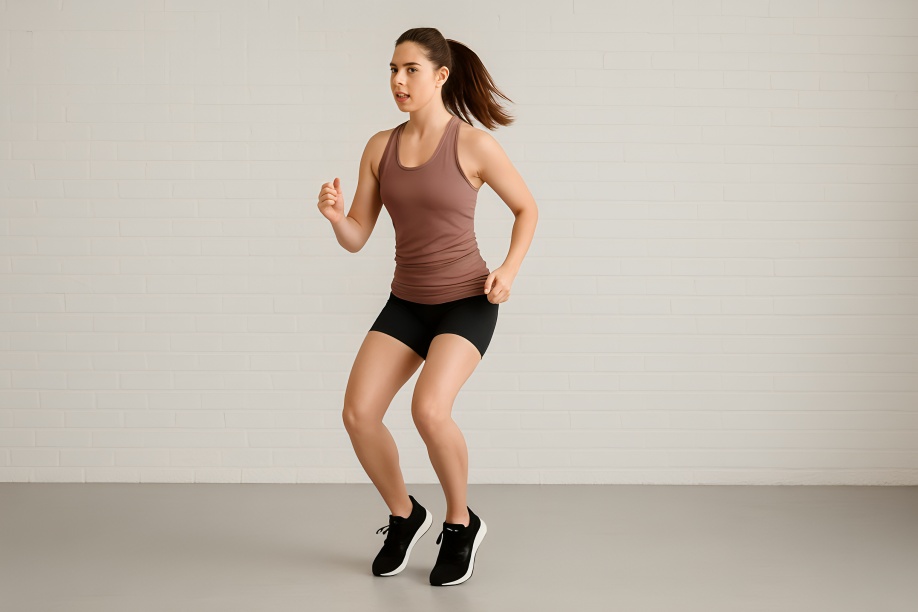
What It Targets: Hamstring flexibility, hip mobility, and spinal rotation
Why It Matters: Tight hamstrings and stiff hips can lead to discomfort and limited range of motion. Adding a twist enhances core engagement and promotes rotational mobility.
How to Do It:
- Stand tall with your feet hip-width apart. Hinge at your hips and fold forward, letting your hands hang toward the floor or rest on your shins. Bend your knees slightly if needed.
- Place your right hand on the ground (or shin) and extend your left arm toward the ceiling, twisting your torso gently to the left. Look up at your raised hand if comfortable.
- Hold for 3–5 deep breaths, then switch sides.
Bonus Benefit: This move helps combat the tightness that often accompanies prolonged sitting, reducing the risk of lower-back strain.
3. Wall Angels
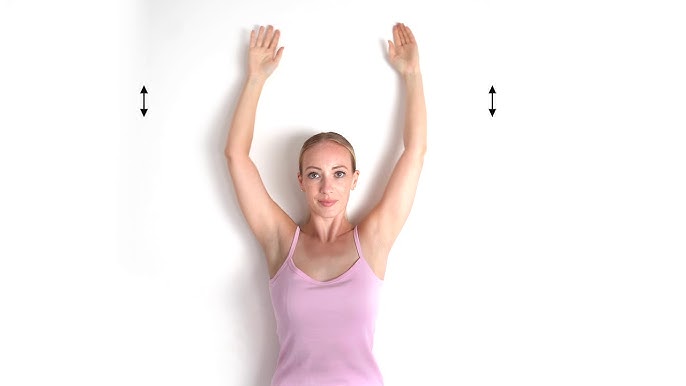
What It Targets: Shoulder mobility, upper-back strength, and posture
Why It Matters: Years of desk work and screen time can lead to rounded shoulders and weakened upper-back muscles. Wall Angels strengthen the postural muscles while improving shoulder mobility.
How to Do It:
- Stand with your back against a wall, feet about 6 inches away from the base. Press your lower back, upper back, and head firmly against the wall.
- Bend your elbows to 90 degrees, keeping them and your wrists in contact with the wall. Slowly slide your arms up overhead, then back down to the starting position.
- Perform 10–12 repetitions, focusing on maintaining constant contact with the wall.
Bonus Benefit: Strengthening these muscles supports healthier posture and reduces the likelihood of shoulder impingement or neck pain.
Also read – Walk Smarter: 7 Ways to Burn More Without Walking Faster
4. Step-Backs (Modified Push-Ups)
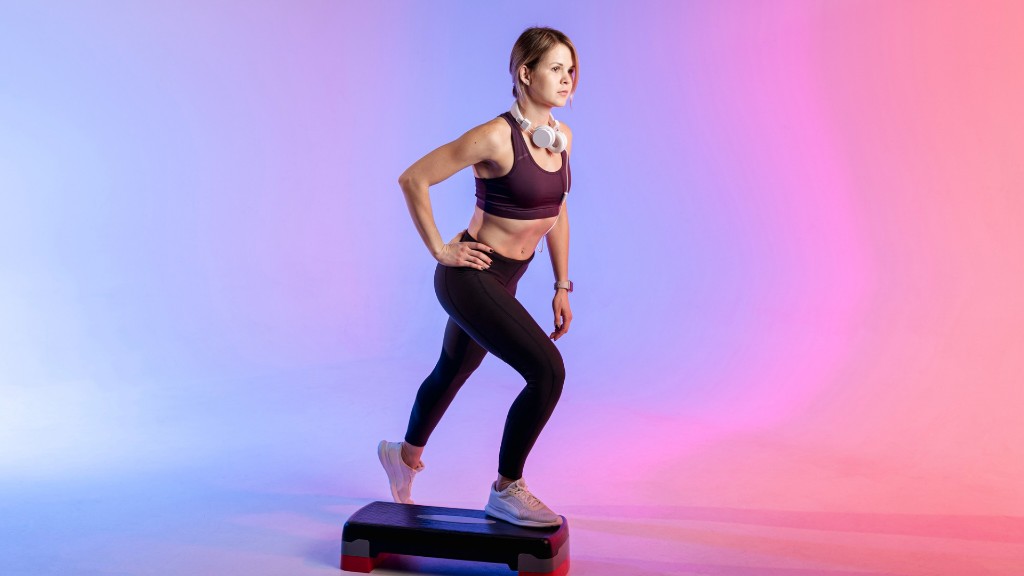
What It Targets: Upper-body strength, core stability, and balance
Why It Matters: Maintaining upper-body strength becomes increasingly important as we age to support everyday activities like carrying groceries or lifting objects.
How to Do It:
- Begin in a high plank position with your hands directly under your shoulders and your body forming a straight line from head to heels.
- Step one foot back at a time into a standing position, then return to plank by stepping forward again. Alternate feet with each repetition.
- If full planks feel too challenging, drop to your knees for added support. Aim for 8–10 step-backs per side.
Bonus Benefit: This low-impact variation builds strength without putting excessive stress on the joints, making it ideal for older adults.
5. Side-Lying Leg Lifts
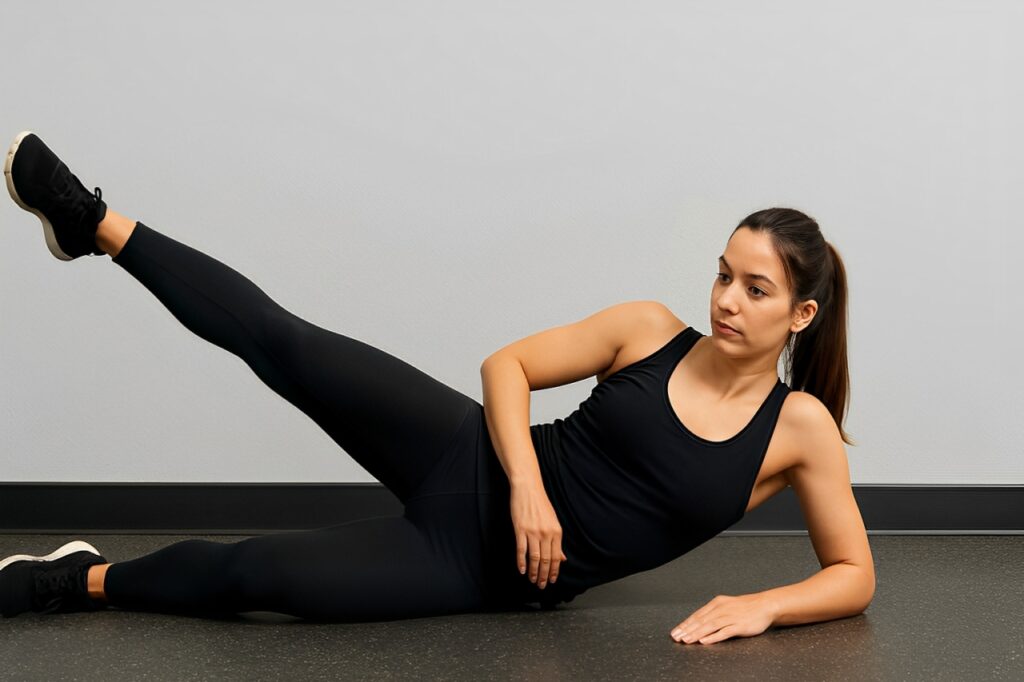
What It Targets: Hip stability, glute activation, and lateral mobility
Why It Matters: Weak hips and glutes contribute to issues like knee pain and poor balance. Strengthening these areas helps maintain stability and reduces injury risk.
How to Do It:
- Lie on your side with your legs stacked and your head resting on your bottom arm (or propped up on your elbow).
- Engage your core and lift your top leg toward the ceiling, keeping it straight but not locked. Lower it back down with control.
- Perform 10–12 lifts on each side, ensuring smooth, deliberate movements.
Bonus Benefit: Stronger hips and glutes provide a solid foundation for walking, climbing stairs, and other daily activities.
Also read – 30 Days of 100 Lunges: The Surprising Results
Why Consistency Is Key
You don’t need to overhaul your entire lifestyle to see results—just commit to showing up for yourself each morning. These exercises are designed to be quick, effective, and easy to incorporate into your routine. Over time, even a few minutes of intentional movement can make a profound difference in how you feel and function.
Remember, aging is inevitable, but losing strength and mobility doesn’t have to be. As Lisa Bennett reminds us, “Every small effort adds up. When you prioritize your body’s needs, you’re investing in a future where you can move freely and confidently.”
So tomorrow morning, roll out of bed, take a deep breath, and give yourself the gift of movement. Your body will thank you for years to come!


